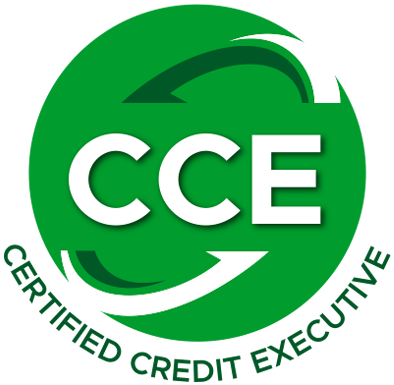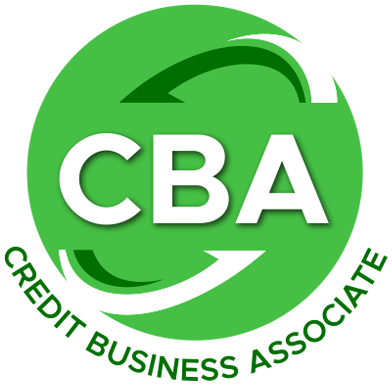Online Courses
Online Courses & Specialty Certificates
NACM offers a wide variety of online courses that cover everything from basic to advanced business credit concepts and topics. Experts in the field record and lead some courses; and for others, expert practitioner instructors monitor online progress. While most of the courses are on demand and can be completed at your convenience, the Basic Financial Accounting and International Credit & Risk Management courses begin and end on specific dates, three times each year.
Advanced Credit Policy
Led by Dr. Frederick C. Scherr, this advanced course in the analysis and formulation of credit policy examines the areas of credit investigation, terms of sale, credit granting, and credit limits. This course is designed for those making and enforcing credit policy. The course textbook, Making Sound Credit Policy Decisions, is included in your purchase and mailed to you.
Basic Financial Accounting
This course presents an introduction to basic financial accounting. Students begin at square one, learning the foundation of accounting principles. As the language of business, accounting is essential to business professionals. The course runs approximately 15 weeks and is facilitated by an accounting professional who is available for questions by email. Students receive a course bundle before the start of the session, which includes the textbook, study guide, and online component. During the course, students will take four proctored exams online. This course satisfies one of the three required courses for NACM’s Credit Business Associate (CBA) professional designation.
Bankruptcy Bootcamp
Learn the ins and outs of bankruptcy in this specialty certificate course, which spans three one-hour modules. Led by Lowenstein Sandler, LLP attorneys Eric Chavez and Jeffrey Cohen, you will learn the purpose of bankruptcy, what to know once a case has commenced, and the best ways to maximize recoveries and limit losses. Eric and Jeff use real-world examples to make the learning experience more practical. Module 1 covers the fundamentals; Module 2 covers the details once a case has commenced; and Module 3 focuses on maximizing recoveries and mitigating losses.
Business Credit Principles
Designed and written by fellow credit professionals and led by instructor and credit veteran, Toni Drake, CCE, Business Credit Principles is essential for every credit professional. This comprehensive course covers all of the vital elements of business credit, including the role of credit in financial management, the components of effective credit department systems, specific government regulations that pertain to business credit, credit policy and procedures, selling terms, negotiable instruments, the Uniform Commercial Code, credit investigations, finance and business insurance, business credit fraud, factors associated with credit limits, and international trade, as well as bankruptcy codes and alternatives to bankruptcy. This course satisfies one of the three required courses for NACM’s Credit Business Associate (CBA) professional designation.
Business Law
This course covers various legal aspects of business. Module topics include Law and the Legal Environment, Contracts, and Sales and Lease Contracts. Each one of these topics is broken down into multiple modules for in-depth instruction. You will use two textbooks to follow along readings, which are outlined in the syllabus (provided in the Handouts tab). This course fulfills one of the two required courses for the Credit Business Fellow (CBF) professional designation.
Commercial Bankruptcy Credit Specialist
This course provides a broad overview of bankruptcy to familiarize credit professionals with the different chapters and parties involved. It discusses the major bankruptcy chapters in depth and describes how a creditor can deal with and work through them. You will learn what rights you have as a creditor. The credit professional may recognize the term reclamation from state law concepts. Although reclamation is not specifically a bankruptcy concept, it is implemented in bankruptcy. This specialty certificate course also provides how-to basics on dealing with preference claims and customers filing bankruptcy.
Commercial Collections Specialist
Attorney Robert Bernstein examines the four basic costs of credit that businesses should consider when developing a credit policy. These fundamentals aid in understanding why a customer doesn’t pay, enabling your business to prevent some of these situations. Learn how documenting the credit relationship is a vital part of the preparation for lending and how the right policies and procedures help ensure a good credit relationship with customers. This course is designed for credit professionals with zero to three years of credit experience. The material in this collection of modules is designed for the beginning credit professional. Because regulations vary from state to state, this presentation covers general concepts about state regulations.
Commercial Construction Credit Specialist
This course is designed especially for commercial credit executives in the building and construction arena. It covers construction terminology and the importance of contract terms and forms that will reduce costs and motivate a debtor to pay. The course presents a brief guide to the Uniform Commercial Code, along with descriptions and explanations of Article 2: Sales; Article 6: Bulk Sales and Article 9: Secured Transactions. Learn the terms the Uniform Commercial Code adds to your contract automatically unless you otherwise agree. The course also examines the mechanic’s lien filing process, including when and why to file a preliminary notice. Other topics include payment bonds, the difference between public and private entities, and dispute resolution options.
Credit Law
This 23-module course is designed to teach business credit professionals about the legal aspects of business credit. Module topics include business organizations, commercial transactions, and government regulation and compliance. Eighteen of the 23 one-hour modules require a passing quiz grade to advance to the next module. Many of the modules feature guest speakers who provide valuable information and real-time examples. This course fulfills one of the two required courses for the Credit Business Fellow (CBF) professional designation.
Financial Statement Analysis 1
Using the text, Understanding Financial Statements, this course presents an overview of financial statements and then dives into the Balance Sheet, the Income Statement, Statement of Stockholders Equity, and the Statement of Cash Flows. The final chapters examine sources of information, such as audit reports and 10Ks, and key financial ratios, including activity, profitability, and leverage ratios. Short-term liquidity, operating efficiency, capital structure, and long-term solvency are also examined. Led by Dr. Frederick C. Scherr, this course satisfies one of the three required courses for NACM’s Credit Business Associate (CBA) professional designation.
International Credit & Risk Management Online Course℠
The International Credit & Risk Management (ICRM) course is a comprehensive, in-depth 13-week course designed to educate professionals about the intricacies of global credit and risk management. The course offers vital, up-to-date information in a collaborative, 24-7 accessible learning environment. Peer-to-peer interaction helps strengthen, diversify, and build a reliable network of professionals, while helping learners gain an all-encompassing view of credit and risk management. Drawing from multiple perspectives, the knowledge and hands-on experience provides a balanced view of how to better understand, manage, and mitigate the credit risks associated with doing business internationally. In simple terms—know the risks of getting paid and get paid on time. Successful completion of this course and exam leads to the Certified International Credit Professional (CICP) designation.
Letters of Credit (LCs)
Most exporters will use letters of credit (LCs) at some point in their business. LCs should be simple and effective payment tools, but experience reflects a different scenario. Most exporters encounter payment frustrations and delays due to incorrect/discrepant documents being presented to banks for payment. In this 8-module specialty certificate course led by Chip Thomas, General Manager of the American Export Training Institute, you will learn about all aspects of the Letter of Credit process. You will learn the major causes of discrepancies and the critical factors that exporters must manage or control in order to avoid this problem. This course is a must if you want to reduce your frustrations, DSO and costs when using letters of credit, and you care about improving cash flow and profitability. Empower yourself to improve your letter of credit skills and outcomes! Watch a quick clip of instructor Chip Thomas share the importance of LCs.
Soft-Skills, Ways to Conduct Effective Conversations with Kevin Stinner
Employers need current or prospective staff to have strong soft-skills, which are a combination of people and communication skills along with emotional intelligence and certain personality traits. In this course, you will learn about the skills especially helpful to today’s credit professional, including how to have effective conversations face-to-face, on the phone, and with the sales department. Each topic is broken down into its own module.







 Toni Drake, CCE is the President of TRM Financial Services, Inc., a company specializing in consulting and outsourcing services in the area of business credit and collections. Ms. Drake launched The Connection Center in 2005, which focuses on training and education in credit and collections, including financial statement analysis, as well as in the areas of professional development. Ms. Drake has been a member of NACM since 1984, and began teaching CAP classes and various educational sessions in 1997. Ms. Drake served as the NACM National Chair of the Board in 2013. She is an alumni of the NACM Graduate School of Credit and Financial Management at Dartmouth College. She was awarded the Credit Executive of the Year Award by NACM-Southwest and was awarded the CCE Designation of Excellence Award by NACM National in 2008.
Toni Drake, CCE is the President of TRM Financial Services, Inc., a company specializing in consulting and outsourcing services in the area of business credit and collections. Ms. Drake launched The Connection Center in 2005, which focuses on training and education in credit and collections, including financial statement analysis, as well as in the areas of professional development. Ms. Drake has been a member of NACM since 1984, and began teaching CAP classes and various educational sessions in 1997. Ms. Drake served as the NACM National Chair of the Board in 2013. She is an alumni of the NACM Graduate School of Credit and Financial Management at Dartmouth College. She was awarded the Credit Executive of the Year Award by NACM-Southwest and was awarded the CCE Designation of Excellence Award by NACM National in 2008. About the Program
About the Program